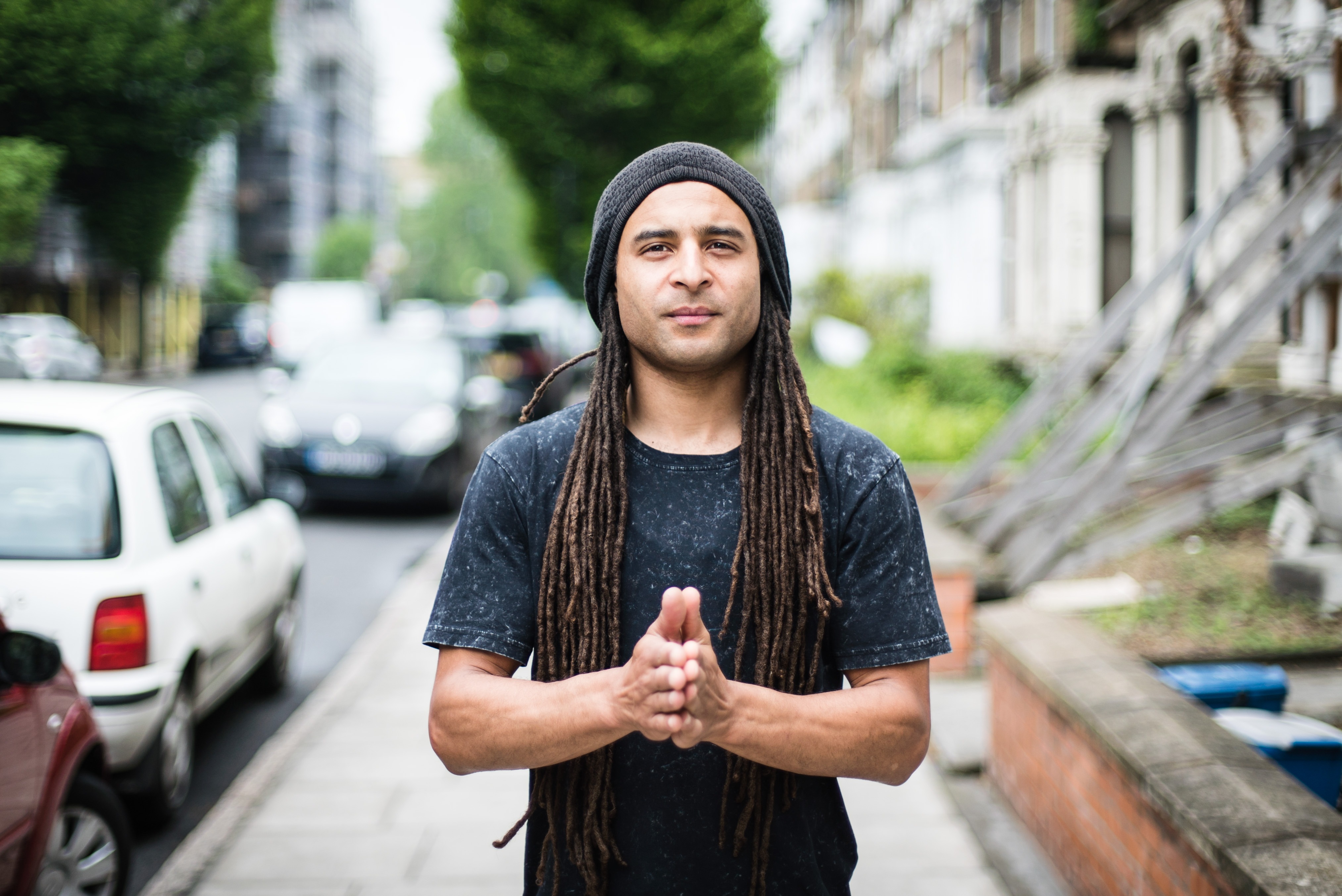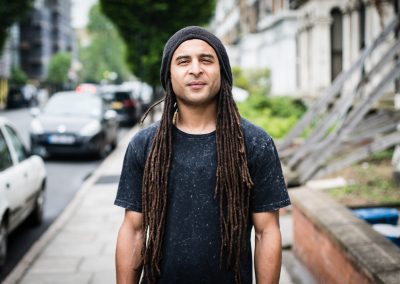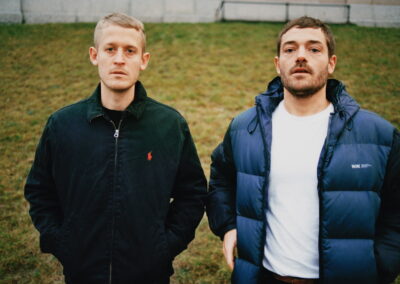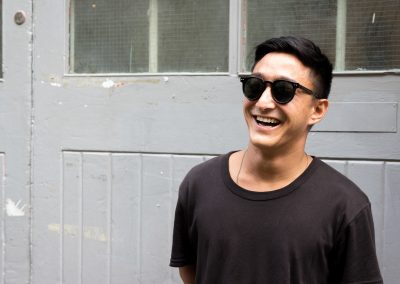
Episode 3 – Mala
Despite dubstep’s ever-morphing progression and partial shift into the mainstream through EDM, Mala has remained true to his own personal vision. He’s expanded his horizons, and developed both as an artist and a person through his solo album projects which explore the musical and cultural traditions of other countries, firstly Cuba in 2011, and now Peru, fusing them with his south London sound system-focused productions.
In this episode of Sound Motives, we explore Mala’s early influences from jungle to Augustus Pablo, his perspectives on the emergence of dubstep, his relationship with the dance floor and club culture, and how the future looks.
You can check Mala’s Sound Sources individually below, or in more detail on the ‘Sound Sources’ tab at the top of the page.
NOTE: You might need to launch Spotify for the below playlists to play correctly.
You can download the low-res podcast version of the show HERE.
Tracklist
Mala – Kotos (Brownswood)
Gunsmoke & Shy FX – Original Gangsta (SOUR)
Cypress Hill – Wanna Get High (Ruffhouse Records)
Shy FX – Simple Tings (SOUR)
Mala – Changes (James Blake’s Harmonimix) (Deep Medi)
Mala – Changes (Deep Medi)
Roni Size – All The Crew ‘Big Up’ (95 Lick) (V Recordings)
Ghost – 2000 (Tempa)
Roni Size – All The Crew ‘Big Up’ (95 Lick) (V Recordings)
Zed Bias – Neighbourhood (El B Remix) (Locked On)
Digital Mystikz – Pathways (Deep Medi)
Loefah – Indian Dub (Big Apple)
Coki – Mood Dub (Deep Medi)
Augustus Pablo – King Tubby’s Meets Rockers Uptown – Frozen Dub (Yard Music)
Digital Mystikz – Anti War Dub (DMZ)
Kahn – Over Deh So (Deep Medi)
Mala – Shadows ( Brownswood)
? – Alicia (White Label)
Nitin Sawhney – Sunset (Zomba)
Nitin Sawhney – Tides (Zomba)
Mala – Calle F (Brownswood)
Stormzy – Shut Up (White Label)
Mala – Sound of the River (Brownswood)
Sound Sources
Jungle
There are a few documentaries that explore the jungle period linked below. First, footage from those classic Metalheadz sessions at Blue Note in Shoreditch (complete with VFXs, vox-pops and VHS distortion), then the Dazed Jungle Fever Doc that provides an overview of the period, and finally, a BBC doc which I remember watching as a teenager, that covers LTJ Bukem and Good Lookin Records’ rise in the late 90s.
In Episode 3, Mala also mentions the Eskimo Noise soundsystem which was behind the Metalheadz Blue Note events that were so influential on him. For more on Eskimo Noise, here’s an interesting article on RBMA, curated by dutch producer Martyn, which explores that period further.
Additionally, Eddie Otchere has an excellent series of photos from the period here.
In his teens, Mala discovered the music of Jamaican melodica player and producer Augustus Pablo. Mala enjoyed the small flourishes and melodies that only appeared once in tracks, and he tried to bring some of that subtlety of approach to his own productions.
“Although best known for his mastery of the melodica, easily being the world’s premier exponent of that peculiar instrument, his musical skill was not limited to merely conquering the hand-held child’s toy. Indeed, Pablo was a pioneering record producer in his own right, as well as a renowned session keyboardist. His uniquely spirited instrumentals, most of which took inspiration directly from his profound belief in Rastafari, took reggae music to a higher plateau, and the mournful quality of Pablo’s ‘Far East’ sound resulted in some of the most striking moments of the roots reggae era.
In addition to helping solidify the reggae genre at the start of the 1970s, Augustus Pablo was a key figure of dub artistry, since his early collaborations with King Tubby are exemplary, and his experimental collaboration with Lee ‘Scratch’ Perry raised the dub instrumental to another level. Pablo was also an early champion of the drum machine and often experimented with computer-generated rhythms in his later works, somehow always infusing his creations with an undercurrent of organic synergy informed by the pulsating rhythms of Africa.
He was born Horace Swaby in 1954, the son of a prominent lawyer of part-Indian extraction. At the prestigious Kingston College, his classmates included talented musicians such as drummer Sparrow Martin (a later Studio One stalwart and current bandleader at the Alpha Boys School), along with keyboardist and trumpeter Ralph Holding and a trombonist called ‘Poco’, with whom Horace began jamming at school. But his greatest role model in music was Jackie Mittoo, the legendary keyboardist and arranger that had such a prominent role at Studio One during the early years of the Jamaican music industry. And although the future Pablo was raised in an uptown, mixed-race environment, he later forged his strongest affinity with the black disenfranchised of the Rastafari movement, typically found in Kingston’s most peripheral spaces.”
Here’s a fascinating in-depth beginner’s guide to the music of Augustus Pablo, courtesy of David Katz, for Fact Magazine.
With a huge back catalogue that spanned from the mid-70s until his death in 1999, there’s a lot of Augustus Pablo’s work to discover, but the late 70s period is considered his finest.
Check Joseph’s productions as Kahn for a dubstep-focused sound, Kahn & Neek and Bandulu Records for grime, and Gorgon Sound for reggae/digi/steppas. He’s also part of the Young Echo Collective.
Last year Mala released an excellent album project between Commodo Gantz and Kahn, as well as various 12s.
“He may be a DJ, a producer, a guitarist, and a composer who’s written for films, TV shows, video games and symphony orchestras, but dance has always been a force in Sawhney’s life. His mother trained as a Bharata Natyam dancer when she was a young woman in India; and, during his own teenage years in Kent, he became heavily involved in the local street dance scene. Seated in his Brixton studio, a magical hive crowded with instruments and recording equipment, he says: “I was a break-dancer when I was a kid. I was really into it.” Later, as a young composer, it was his study of classical Kathak music that led Sawhney to write his first scores for dance, working with British-based performers like Nahid Siddiqui.”
There’s also an interesting TED talk that Nitin gave in 2014 about the meeting of two great minds of the east and west.
Looking to the future, Mala’s excited about the opportunities that exist as a musician in 2016. With Goldie, a generation before him, showing the possibilities of reinvention and continued longevity, and up and coming artists like Stormzy from the next generation introducing new ideas, Mala feels proud to be part of the lineage.
Stormzy is a grime MC who like Mala, hails from south London/Croydon. He came to prominence through a number of self-released freestyles and tracks, which led to his becoming the first unsigned MC to perform on Jules Holland.
Further Content
If there’s any other killer content on Mala that we should include here, get in touch.
malamirrors.com
https://twitter.com/mala_dmz
https://www.facebook.com/malamystikz
https://soundcloud.com/maladmz
.gif)




